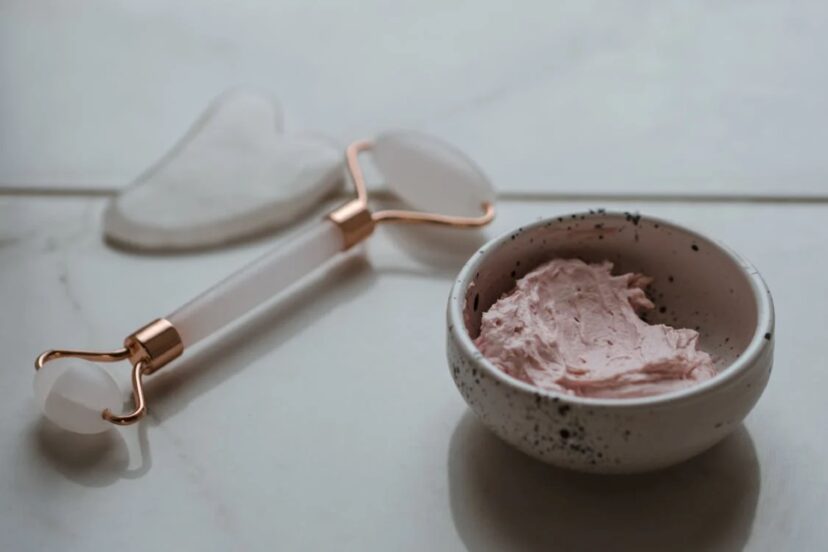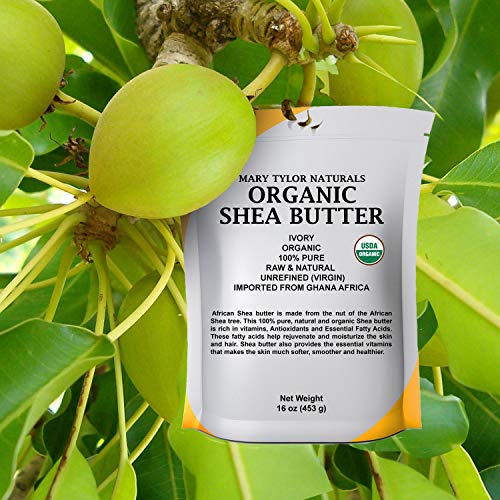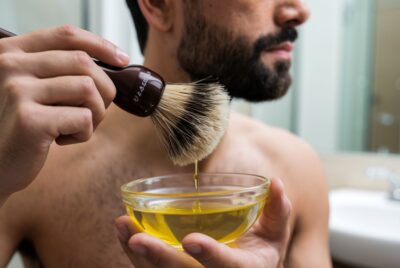Homemade Shaving Cream: Make Your Own Natural Shave Cream
Post Disclaimer
*We may earn a commission for purchases made using our links. Please see our disclosure to learn more.
Are you tired of the harsh chemicals and mystery ingredients in store-bought shaving creams? Or maybe your skin just can’t handle the irritation they cause. If this sounds like you, it’s time to consider a change. Making your own homemade shaving cream isn’t just a crafty endeavor; it’s a smart choice for anyone looking to pamper their skin with natural goodness.
Did you know that making your own shave cream can not only nurture your skin but also keep extra waste from our oceans and landfills? This blog post is here to guide you through creating an all-natural shaving cream tailored specifically to your needs.
Whether you have sensitive skin or are simply striving for a greener lifestyle, we’ll provide easy instructions and helpful tips for crafting your perfect blend at home. Get ready to transform your shaving routine!
Benefits of Making Homemade Shaving Cream
Making your own shaving cream has numerous benefits. It allows you to use all-natural ingredients, which is better for your skin and the environment. Additionally, it’s cost-effective and customizable to suit individual skin needs.
All natural ingredients
Creating your own homemade shaving cream with all natural ingredients means you’re in control of what goes on your skin. You can skip the chemicals and preservatives found in store-bought options, opting instead for nourishing substances like coconut oil, organic shea butter, and aloe vera. These gentle components help to smooth and moisturize the skin while providing a comfortable shave.
The Mary Tylor Naturals Organic Shea Butter is a luxurious skincare essential sourced directly from Ghana, Africa. USDA certified organic and unrefined, this 1-pound block of shea butter offers a light, nutty scent and a multitude of uses for your DIY projects and body care routines. From reducing dark spots, scars, and wrinkles to moisturizing and nourishing your skin, The Mary Tylor Naturals Organic Shea Butter is a versatile addition to your beauty regimen.
- USDA Certified Organic: Sourced from organic farms in Ghana, Africa, ensuring high-quality and sustainable production.
- Multipurpose Usage: Versatile for various DIY projects and skincare routines, offering moisturizing, dark spot reduction, and anti-aging benefits.
- Large Quantity: A generous 1-pound block provides an ample supply for prolonged use, offering value for money.
- Texture Sensitivity: Some users may find the unrefined nature results in a slightly grainy texture, which may not suit all preferences.
- Nutty Scent: While enjoyed by most, the natural nutty scent may overwhelm those with scent sensitivities.
- Melting Potential: Its low melting point necessitates careful storage in warmer temperatures to maintain its solid form.
Using essential oils offers additional benefits; not only do they smell amazing, but they also have properties that can improve skin health. For instance, tea tree oil is known for its antiseptic qualities, which can help prevent razor burn and ingrown hairs.
Experience the versatility and purity of Viva Naturals Organic Coconut Oil, Cold-Pressed. Sourced from the finest organic coconuts, this premium oil serves as a multipurpose solution for both your kitchen and beauty routine. Cold-pressed to retain its natural goodness, this coconut oil offers a rich flavor and aroma, making it perfect for cooking, baking, and frying. Additionally, it serves as a nourishing hair conditioner, scalp treatment, and a luxurious body moisturizer, leaving your skin feeling soft, smooth, and hydrated. Embrace the wholesome goodness of this USDA-Certified Organic, Non-GMO Project Verified coconut oil, and elevate your lifestyle with its myriad benefits.
- Multipurpose Use: This coconut oil serves various purposes, including cooking, baking, hair care, and skincare, providing excellent value for money.
- Organic and Non-GMO: Certified organic and non-GMO, ensuring high-quality, ethically sourced ingredients free from harmful chemicals or additives.
- High Smoke Point: With a naturally high smoke point of 350°F, it's an ideal choice for cooking methods like frying and sautéing, offering versatility in the kitchen.
- Solid at Room Temperature: As with all coconut oils, it solidifies at cooler temperatures, which might require warming before use, especially during colder seasons.
- Strong Coconut Scent: Some users may find the strong coconut scent overpowering, especially when cooking requires a more neutral flavor.
- Packaging Concerns: Some users have reported issues with leaking or damaged packaging upon delivery, although this seems to be a minor issue overall.
Lavender oil soothes the skin with its anti-inflammatory effects. Crafting a DIY shaving gel or cream lets you pick these elements based on their functions as well as personal scent preferences.
The Aloderma Organic Aloe Vera Gel is meticulously crafted within 12 hours of harvest to preserve its freshness and potency. This 96% pure aloe vera gel offers instant soothing relief for your face and body, making it an essential addition to your skincare routine. Whether you're seeking hydration, calming effects, or radiance, our gentle formula caters to all skin types, providing a lightweight and fast-absorbing solution. Elevate your beauty regimen with Aloderma's commitment to quality, sustainability, and organic ingredients, ensuring a rejuvenated and refreshed complexion with every use.
- Immediate Soothing Relief: Offers quick comfort for irritated or sun-exposed skin, reducing redness and inflammation effectively.
- Pure and Nourishing Formula: With 96% organic aloe vera, provides intense hydration, restoring skin's natural balance and leaving it soft and supple.
- Eco-Friendly Processing: Aloe vera is processed within 12 hours of harvest, preserving benefits and minimizing environmental impact.
- Unscented: Some prefer unscented products for sensitive skin, while others miss scented skincare's aromatic experience.
- Gel Texture: While fast-absorbing, the gel consistency may not suit those preferring creamier moisturizers.
- Higher Price: As a premium organic product, may be priced higher than conventional aloe vera gels, limiting accessibility for some consumers.
Turning to nature’s pantry for your grooming needs also opens up endless possibilities for customization without compromising effectiveness. Whether it’s creating a shaving cream tailored for sensitive skin or concocting an organic shave cream that caters to specific skincare goals, going all-natural provides both luxury and peace of mind during your daily routine.
Better for the environment
Choosing to make your own homemade shaving cream is better for the environment. By using natural ingredients, you reduce the reliance on chemical-laden products that can harm ecosystems.
Additionally, creating your own shave cream means less packaging waste and fewer harmful chemicals being washed down the drain, contributing to a greener lifestyle.
When you opt for DIY shaving cream, you play a part in reducing the environmental impact of traditional store-bought products. By making conscious choices about what goes into your skincare routine, you are taking a proactive approach towards eco-friendly living.
Cost-effective
Create your own natural shaving cream at a fraction of the cost of store-bought products. By using simple, easily accessible ingredients like coconut oil, essential oils, and aloe vera, you can make a luxurious shaving cream that’s gentle on the skin and light on your wallet.
With this cost-effective approach, you’ll have the satisfaction of knowing exactly what goes into your grooming routine without breaking the bank.
Besides saving money and reducing waste from disposable packaging, making your own natural shave cream allows for customization. You can tailor it to suit your skin type or personal scent preferences by selecting specific oils or other natural additives that are perfect for sensitive skin or provide extra moisturization.
Customizable for individual skin needs
Create your own shaving cream tailored to your specific skin requirements by choosing the right combination of oils and essential oils. Whether you have sensitive skin, prefer organic ingredients, or want extra moisturization, you can personalize your homemade shaving cream with aloe vera for soothing qualities, coconut oil for hydration, or baking soda for gentle exfoliation.
With this approach, you can make a natural shave cream that suits your unique skincare needs while avoiding unnecessary chemicals and artificial additives.
Crafting your own shaving cream also means being able to omit shea butter if it doesn’t work for your skin type and experimenting with different substitutions until you find the perfect blend.
How to Make Homemade Shaving Cream
To make homemade shaving cream, you’ll need to choose the right oils and essential oils for added benefits, then follow step-by-step instructions. Discover how easy it is to create your own natural shave cream! Read on to learn more.
Choosing the right oils
For a homemade shaving cream, it’s important to choose the right oils. Look for nourishing oils such as coconut oil, jojoba oil, or sweet almond oil. These oils help moisturize and soften the skin, reducing irritation and redness during shaving.
Additionally, consider using essential oils like tea tree or lavender for their antiseptic and calming properties. Selecting the right combination of oils can tailor your shaving cream to suit your specific skin needs while providing a pleasant scent.
When crafting homemade shaving cream, avoid heavy or comedogenic oils that can clog pores and cause breakouts. Instead, opt for lightweight and non-greasy options that absorb easily into the skin without leaving a residue.
Essential oils for added benefits
Enhance your homemade shaving cream with essential oils for added benefits. Lavender oil can soothe sensitive skin, while tea tree oil offers antimicrobial properties to help prevent razor bumps and irritation.
Peppermint oil provides a refreshing scent and a cooling sensation, perfect for an invigorating shave experience. Eucalyptus oil is known for its antiseptic properties, making it an excellent addition to keep the skin clean and healthy.
Experiment with different combinations of essential oils to customize your shaving cream according to your specific skincare needs.
Choose from a variety of essential oils such as lavender, tea tree, peppermint, or eucalyptus; each offering unique benefits for your homemade shaving cream. Create a blend that suits your preferences and addresses any specific skin concerns you may have.
Step-by-step instructions
To make homemade shaving cream, gather the following ingredients: coconut oil, sweet almond oil, and shea butter. In a double boiler, melt 1/4 cup of coconut oil and 1/4 cup of shea butter over low heat. Once melted, add 2 tablespoons of sweet almond oil. Remove from heat and let it cool for a few minutes.
Additional Tips and Cautions
Proper storage is important to keep your homemade shaving cream fresh and effective. Be mindful of ingredient substitutions and always do a patch test before applying the cream to your skin.
Proper storage
To maintain the quality of your homemade shaving cream, store it in a cool, dry place away from direct sunlight. Avoid keeping it in areas with high humidity or temperature fluctuations to prevent spoilage and preserve its texture.
Store the shaving cream in a tightly sealed container to prevent air exposure, which can cause the oils to go rancid.
After each use, ensure that the container is closed securely to avoid contamination or drying out of the product. Keeping your natural shave cream properly stored will help prolong its shelf life and maintain its effectiveness for longer periods.
Ingredient substitutions
For ingredient substitutions, consider using almond oil or jojoba oil instead of coconut oil for a lighter texture. You can also replace essential oils like tea tree or lavender with others that suit your preferences and skin type.
To cater to sensitive skin, opt for a milder alternative to baking soda, such as colloidal oatmeal. Additionally, if shea butter is not available or suitable for you, cocoa butter can be used as a nourishing replacement.
When making homemade shaving cream, it’s essential to be mindful of potential allergies and sensitivities by performing patch tests before full application. By ensuring the suitability of the ingredients, individuals can customize their shaving cream according to personal needs and preferences.
Patch testing
Before using your homemade shaving cream, it’s crucial to perform a patch test on a small area of skin. This helps determine if you are allergic or sensitive to any of the ingredients used.
To do this, apply a small amount of the cream behind your ear or inside your elbow and wait 24 hours to check for any adverse reactions. It’s an essential step in ensuring the safety and effectiveness of your DIY skincare product.
It’s always best to be cautious when trying new products, especially those containing natural ingredients like coconut oil and essential oils. Taking the time for a simple patch test can prevent potential discomfort and help you enjoy the benefits of your homemade shaving cream without any unwanted side effects.
Conclusion
In conclusion, making your own natural shaving cream has numerous benefits. By using all-natural ingredients, you can ensure that no harmful chemicals are used on your skin. Additionally, it’s a cost-effective and customizable alternative to store-bought products.
With the right ingredients and precautions in place, you can create a personalized shaving experience that is better for both you and the environment.
FAQs
1. Can I make my own shaving cream at home?
Absolutely! You can create a homemade shaving cream recipe using natural ingredients like coconut oil and baking soda, which is great for your skin.
2. Is it possible to make an all-natural shaving cream that’s good for sensitive skin?
Yes, you can make an all-natural shaving cream without shea butter that’s gentle on sensitive skin by choosing the right DIY skincare recipes.
3. What ingredients do I need to make DIY shaving cream for pubic hair?
For making your own safe and soothing shaving cream for pubic hair, use gentle ingredients from organic and homemade bath and body product recipes.
4. Are there any alternatives to commercial shave creams that are better for my skin?
Of course! Try making your own natural grooming essentials, like a natural shaving gel or organic scratching products formulated with wholesome homemade beauty product recipes.
5. How does creating my own personal care items benefit me more than store-bought ones?
Making DIY personal care products such as DIY grooming essentials allows you control over what goes on your skin, ensuring you’re using only high-quality, natural skincare components.













